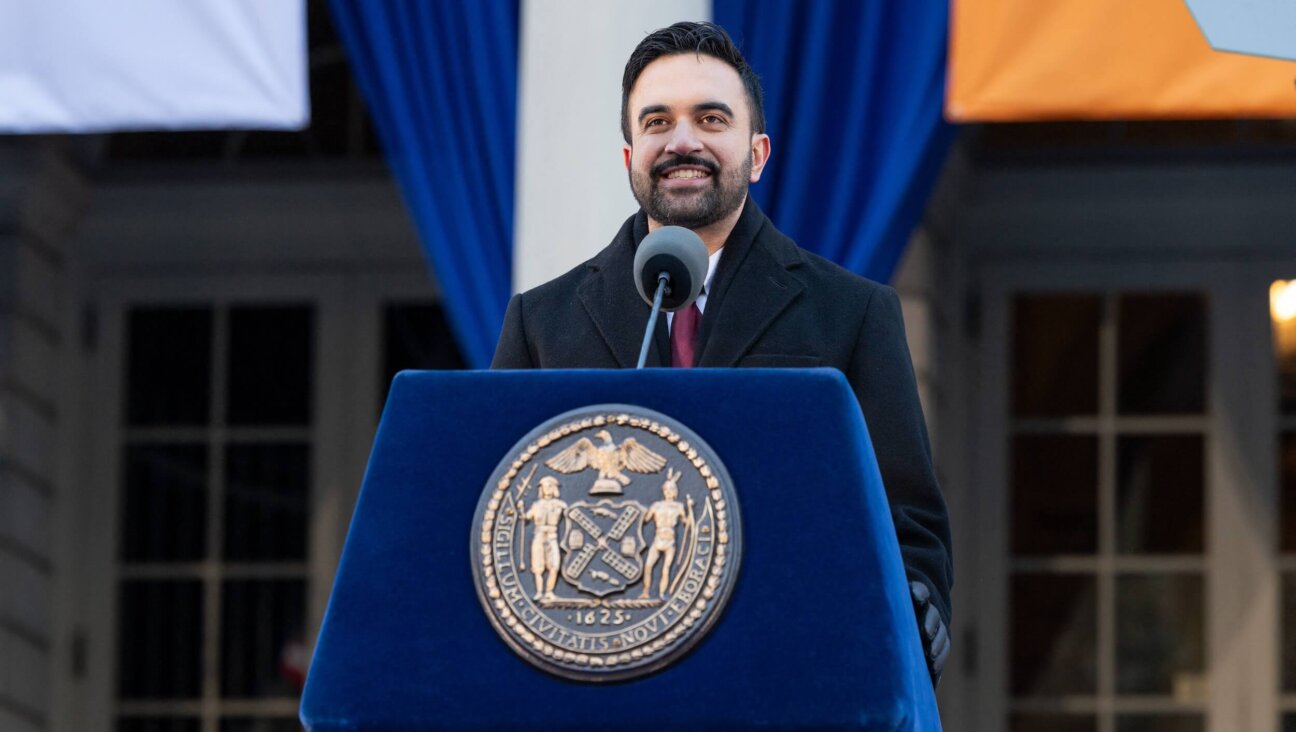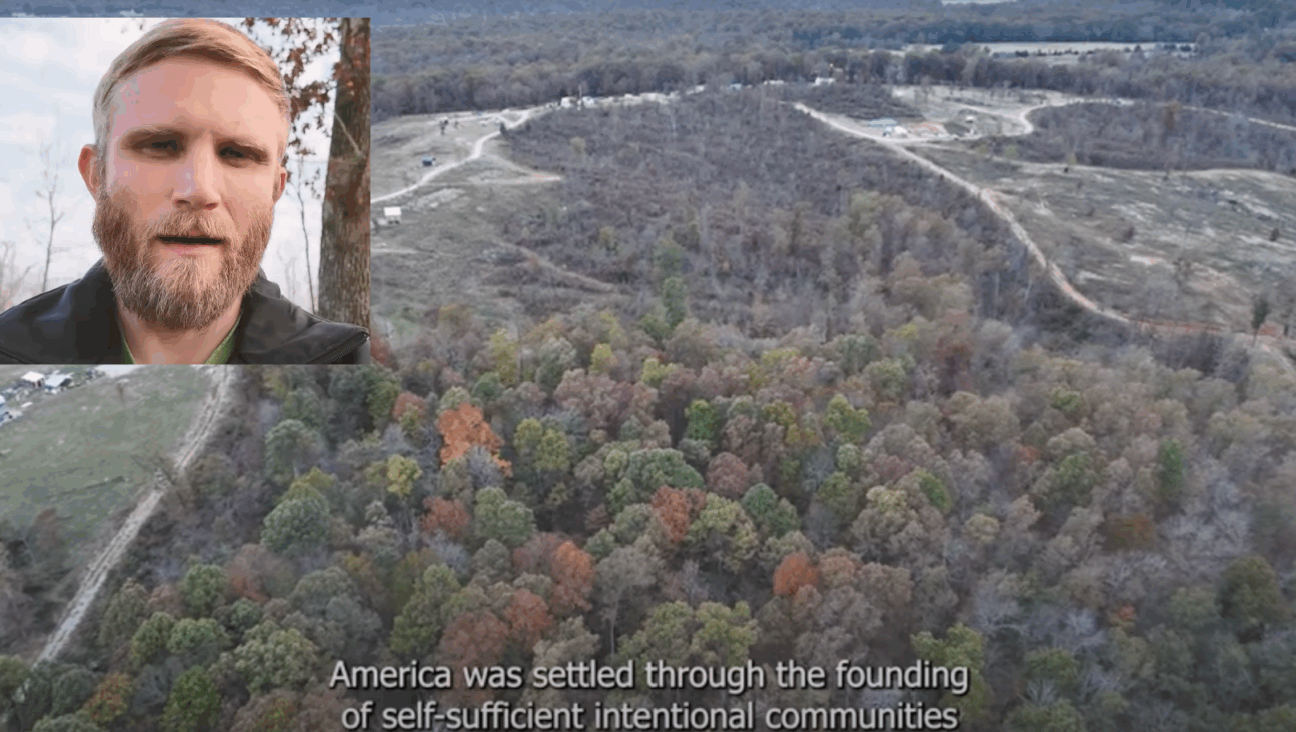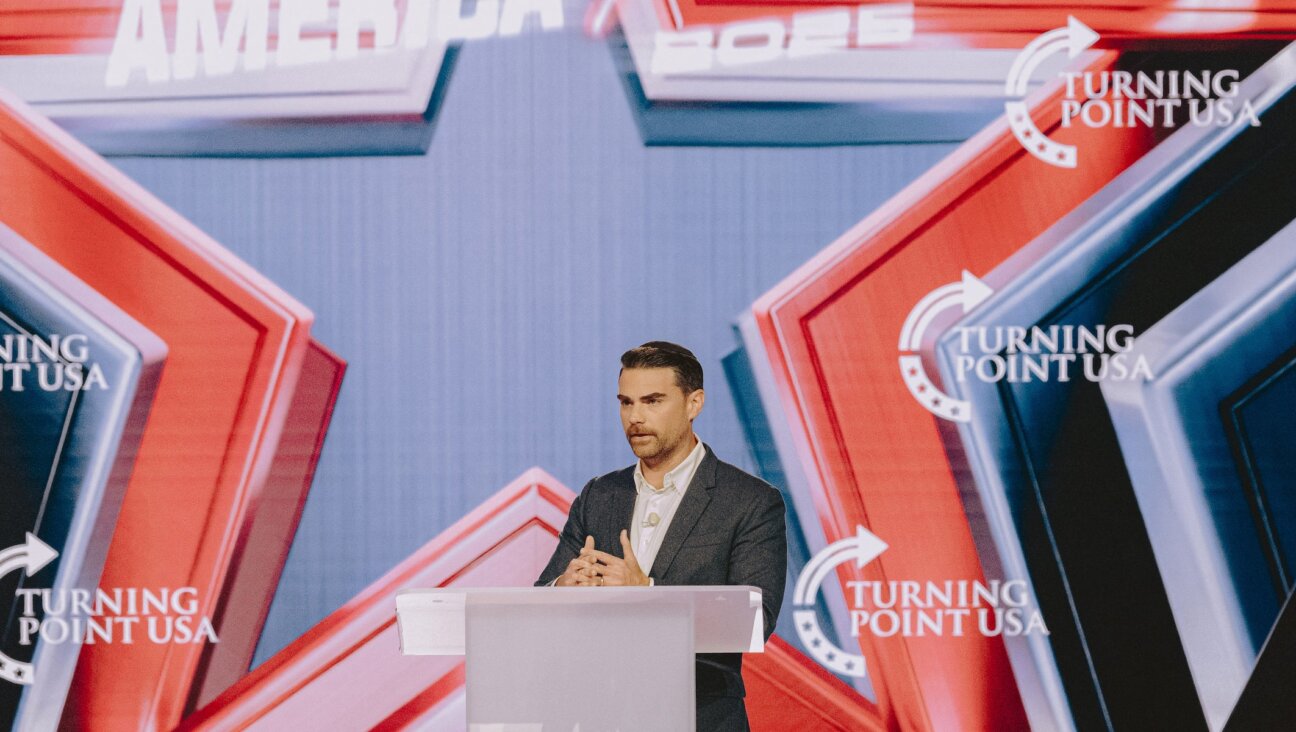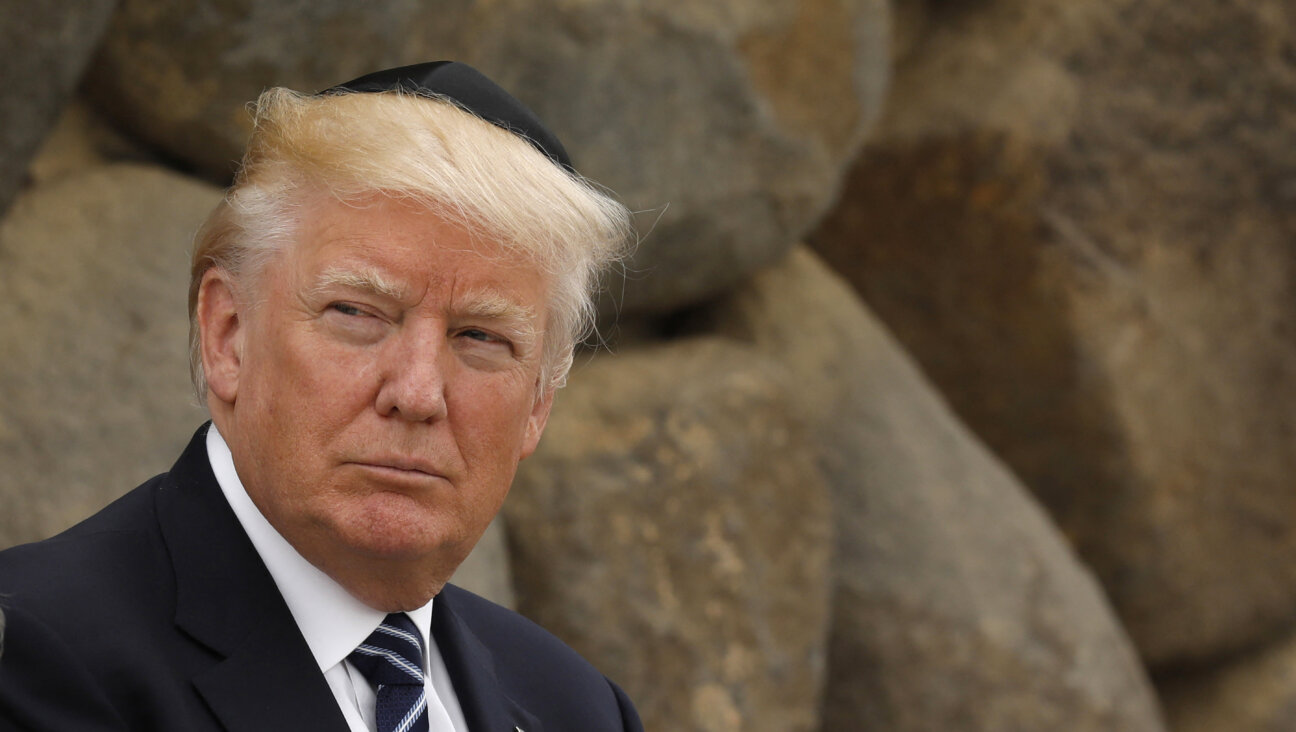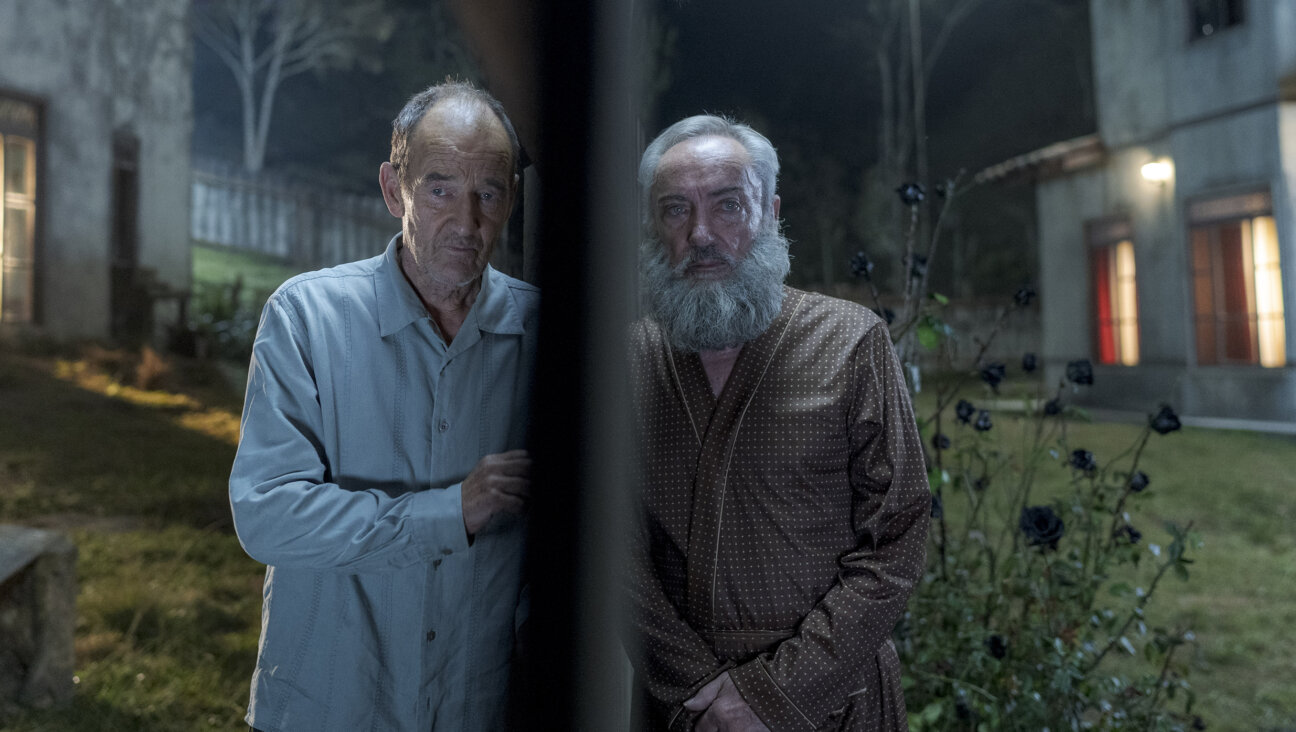His grandfather’s Holocaust stories didn’t add up — so he set out to tell the fact-checked version
In ‘Stolen Headstones,’ Ari Schneider writes the official account of his family’s Holocaust story
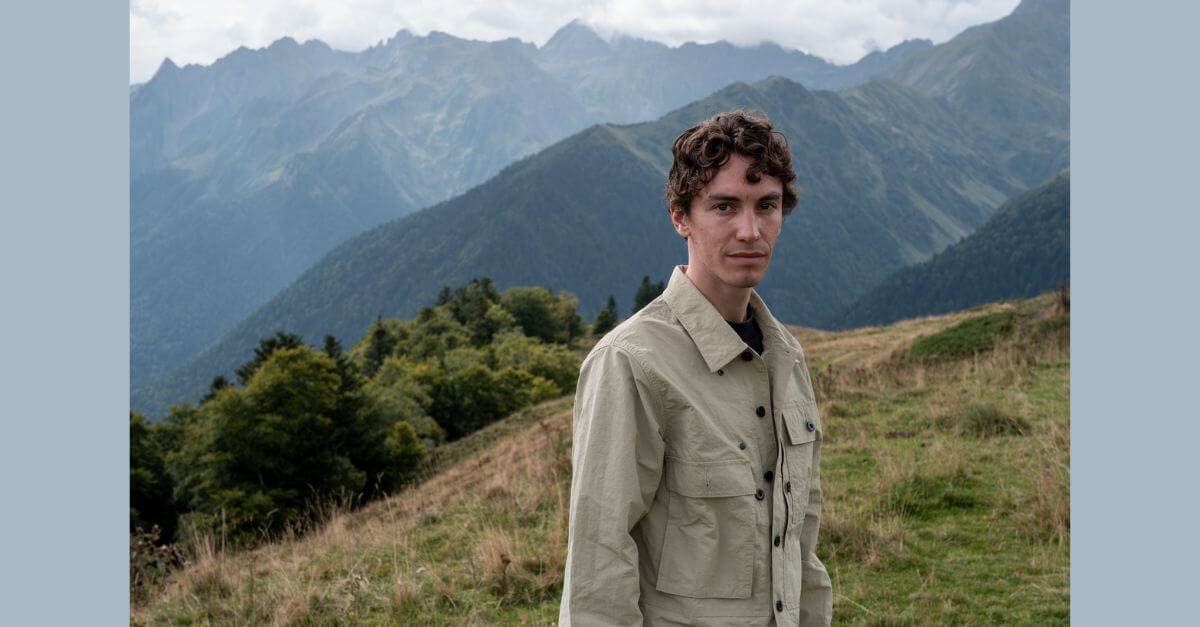
Ari Schneider on his reporting trip in Bagneres de Luchon, France. Courtesy of Ari Schneider
Like many Holocaust survivors, Ari Schneider’s grandfather made it a point to repeatedly tell his story — to honor the promise to “never forget.” He spoke at schools, partnered with Holocaust museums, and dedicated himself to preserving the memory of the Shoah.
But the more Ari listened to his grandfather’s story, the more it didn’t add up.
Details in Louis Schneider’s story would shapeshift each time he told it. He claimed he had been on a train bound for a concentration camp, but the camp’s name would change in different tellings. He said the train was bombed, killing almost everyone on board, while he escaped without a scratch. But Ari could find no record of such a bombing taking place.
Louis also claimed he joined the Jewish Partisans at age 10 and once shot a Nazi in the head. But Louis spent his childhood in hiding, and it was difficult for Ari to believe Louis’ caretakers would have allowed him outside to take part in armed resistance.
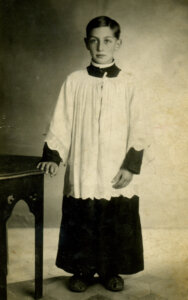
Ari had empathy for why his grandfather might embellish. Louis lived a double life as a child, presenting to the world as a Catholic boy named “Luigi” — learning from a young age that lying was necessary for survival. And the trauma of the Holocaust had deeply affected him. “I’m afraid if I form an attachment, it will be taken away from me,” he said in a 1999 interview with the documentary filmmaker Aviva Slesin. “And therefore, I deprive myself in the first instance.”
But Louis’ disregard for the truth bothered Ari, as he put it, “both as a journalist and as a Jew.” So when he visited his grandfather, he asked if he could see the items he’d kept from the Holocaust. Buried in a bedroom cabinet was a copy of Ari’s great-grandmother’s unpublished memoir — filled with stories Ari had never before heard.
Ari also discovered Louis’ writings, where he wrote this: “I am making a concerted effort NOT to ‘research’ or try to ‘verify’ events and circumstances which were related to me. Instead, I will tell them as if they were the truth inviolate.”
This left Ari in an uncomfortable position. Could outing his grandfather’s likely fabrications risk reinforcing conspiracy theories that deny the Holocaust ever happened?
In the end, Ari decided the truth mattered more than those who would seek to distort it. Plus, the 29-year-old had the ideal career for researching the story, as an investigative journalist and senior writer at the Mountain Gazette.
After Louis’ death last year, Ari set out to write the official account of his family’s story, traveling to Belgium, France, Italy, Switzerland and Poland on the Mountain Gazette’s dime to visit the sites his family traversed while escaping the Nazis.
Ari fact checked every detail he could, cross-checking his great-grandmother’s memoir with thousands of pages of documents and hundreds of hours of testimonies from other survivors. To verify a story about his great-grandfather being arrested for “milk trafficking” — that is, buying milk on the black market — he checked police records. To verify parts of a story about a doctor protecting his great-grandmother from the Nazis, he checked his great-grandmother’s medical records.
In May, he published his family’s story in the print-only Mountain Gazette, and in July, he self-published an e-book, Stolen Headstones: One Family’s Forgotten Holocaust Story. In the book, Ari devotes little space to Louis’ embellishments, choosing instead to focus on the verifiable account.
That train Louis often referenced in his stories was likely never bombed. In reality, Louis’ mother (Ari’s great-grandmother), Deborah, jumped from the moving train with her two children in her arms. She was seriously injured, and a doctor agreed to help hide her and the children. He placed them in the care of the Catholic Church in Fossano, Italy, where they found refuge hiding their Jewish identities. At the same time, Deborah’s husband, Joseph, had been deported to Jawischowitz, a subcamp of Auschwitz, where he was forced to work in the coal mines. He survived and reunited with his family. In 1948, the four emigrated to New York City, where Deborah and Joseph would run an alterations and dry cleaning business.
The Forward spoke with Ari over video chat from his residence in Boulder, Colorado.
The following interview has been edited for length and clarity.
Your family’s true survival story, involving living a double life, already sounds like something out of a movie. Why do you think your grandfather felt the need to embellish?
I don’t know why. I can guess. I think it was a mixture of a lot of things — probably a response to the trauma. Maybe he had some false memories. But then, the question is, he had my great-grandmother’s diary. And he had, in his own writings, kind of admitted that he knew he was embellishing. So then, why would he continue to do that? I think he was probably getting a good response from the version of the story that he fine-tuned over the years, probably wanted to make himself seem more like a hero than he was. The fact of the matter is, he was a victim of the Holocaust, and the story was incredible enough on its own. I don’t think it needed any embellishments.
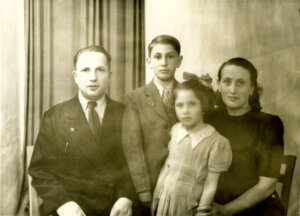
In your research, what did you learn about how trauma affects memory? Or, how trauma affects what we want or choose to remember?
It wouldn’t be unusual for a child survivor to have false memories later in life. And that’s what I had initially thought that he was experiencing when he told me stories that were probably not true. But it was really going to his place and seeing that he had had my great-grandmother’s journal all along, and that was a version of accounts that he deliberately suppressed. Also in his notes, where he wrote that he was not really interested in the truth or fact-checking his version of events, and that he was just going to tell them as if they were the truth. So I don’t know if they became his truth, or if he had some other motive for it. I didn’t want to get too deep into if people have false memories. Because of course they do. But I felt like there was something more going on here than just false memories.
There are people who might worry that this story could give fuel to Holocaust deniers. What would you say to them?
It’s something I thought about, of course. As a journalist, we don’t want our stories to do more harm than good, and so we weigh ethical questions all the time. But in this case, I just felt like the benefit that this story could have for Holocaust education outweighed the risk of people using the story in bad faith. Because the whole story is very detailed and fact-checked very carefully. It clearly proves the Holocaust happened and was horrific, and that my family went through horrible things. So I don’t think you can really make the argument that this one Holocaust survivor told some embellished stories, so that discredits the whole Holocaust. Certainly you can’t do that after reading the book.
You write about some of the strangeness of standing in the very places where your family once hid, now as a free Jewish person, generations later. What emotions came up for you as you were reporting?
I really was so immersed in the research from a journalistic perspective. A lot of times, I kind of failed to really feel like it was my family that I was writing about. There were times where I just felt I was so, almost detached from it, because I was trying to go in with a more objective journalistic lens. It really took me until the end of a trip, when I was in Poland and visiting my great-grandparents’ hometown, that a lot of the emotions started coming up.
It particularly struck me how in Fossano, Italy, the town where members of the Catholic Church protected your family, people still know and celebrate your family’s story today.
Yeah, that was weird in a great way. I knew that these teachers had heard of this story, and that they knew about Reginetta, my grandfather’s sister. But it wasn’t until these teachers were showing me around the town, and they’d be like, “Oh, this is Ari. He’s related to Reginetta.” And everybody’s jaws would drop.
It was also amazing that you got the chance to thank the descendants of the doctor who rescued your great-grandmother.
Yeah, yeah, it was. We were sitting around a dining table together in Fossano. I was just trying to break the ice. I was like, “Oh, so your great-grandfather saved my great-grandmother.” And she said, “Yeah.” And I said, “Oh, thank you.” Like, what do you say? What do you say to that?
As the number of living Holocaust survivors continues to decline, we’re becoming increasingly reliant on these stories being passed down through multiple generations. What do you make of that reality?
I think it’s extremely important to preserve these stories and do these interviews while you can. It’s definitely on our generation of storytellers and journalists to do what we can to interview Holocaust survivors. And also dig up all these documents that have been hiding in closets or just are not very accessible. There are so many stories that have been written down but have been kind of lost and forgotten, because the documents end up somewhere. Like my great-grandmother’s diary — I had to go looking for that, even though it was there all along.

